When it comes to large body-on-frame SUV’s, there is one model that has consistently stood above the rest: the Chevy Tahoe! It’s been the sales king for many years, and for 2025, it’s receiving a big update with more tech, luxury, and features than ever before. However, the Toyota Sequoia was also recently redesigned, and it’s been consistently gaining popularity each year. So, who wins in a 2025 Toyota Sequoia vs. 2025 Chevy Tahoe battle? Let’s find out!
Pricing and Equipment
Now before we get into it, let’s discuss the pricing and equipment levels.
If you haven’t looked at full-size SUVs in a while, you might be surprised at how expensive these have gotten. We’re looking at the fully loaded examples of both, so on the Toyota that’s the Capstone. With 4WD, destination, and just a few options we’re sitting right at $88 grand.
MSRP (Capstone 4WD): $83,665 | Options: $2,370 | Destination: $1,945 | Total: $87,980
As the sales-leader, the Tahoe has always been more expensive than the Toyota, so the refresh has bumped the prices to a new high. After the normal luxury options and new ones like the 24-inch alloys, our total price is now over the mid-90’s for the first time.
MSRP (High Country 4×4): $81,200 | Options: $12,410 | Destination: $1,995 | Total: $95,605
By the way, if you want to get the best price from local dealerships and access to invoice pricing info for these two models or any vehicle, we have a tool on our website to do just that. Click here for more information!
Exterior Design
Big SUVs tend to have big and bold designs and that’s certainly the case for these two. The High Country Tahoe refreshed its face this year to have a black and chrome design with many intricate details to show you spent the big bucks. Previously, it had a full chrome look which is exactly what the Sequoia, on the other hand, embraces. Points won’t be award for design preference, but punctuating the edges, we have very premium lighting on both.
Tahoe gets new full LED projector headlights this year that even have fancy animations as you approach and exit the vehicle.
Sequoia also gets projector LEDs, and both have fog lamps in addition to sequential turn signal indicators.
Heading to the sides, both have big boxy shapes, and lengthwise are massive, so make to check if they will fit into your garage. Sequoia comes in a couple inches shorter than Tahoe but stick around to see how the interior and cargo space stack up.
Lengths: Sequoia: 208.1-inches | Tahoe: 210.7-inches
Regardless, both will throw in massive wheels, but the Tahoe’s are as big as they get in the auto-world. That’s right, I didn’t misspeak earlier: the Tahoe indeed does have 24-inch alloys which are the biggest size we’ve ever seen out of the factory, and that’s enough of a difference to score a point.
For those concerned about ride quality, we will certainly be discussing that later in the driving portion of this comparison.
Moving on, the rear designs are boxy and tough and there is a lot to set them apart when it comes to the details. The Tahoe has stacked taillights as opposed to the Toyota which uses horizontal rear lighting. Both are fully LED setups with dynamic turn signals, but only the Chevy has a hidden rear wiper to keep it from being weathered as much and quad exhaust tips.
Towing is impressive on both, but the Sequoia leads here by about 10% at around 9,000 lbs. as equipped.
TAH (6.2L 4WD, Max tow package): 8,100 lbs
SEQ (Capstone 4WD): 8,980 lbs
Additional Features
Now moving past the designs, both SUVs are loaded with features, like mirrors that heat, fold, automatically dim and include blind spot monitoring.
And as far as all the other safety features, both give you every safety system as standard equipment for 2025. The only difference is the Tahoe has SuperCruise which allows for extensive hands-free driving on highways and two-lane roads. That’s a big benefit for road-tripping vehicles like these.
Next up, we have the warranties, where they have the same coverage besides for Toyota including longer complimentary maintenance.
TAH: Warranty: Basic Warranty: 3yr/36k mi | Powertrain: 5yr/60k mi | Comp Main: 1 visit
SEQ: Warranty: Basic Warranty: 3yr/36k mi | Powertrain: 5yr/60k mi | Comp Main: 2yrs/25k
Anyway, that’s the end of the exterior comparison, so now let’s get to the impressively luxurious interiors.
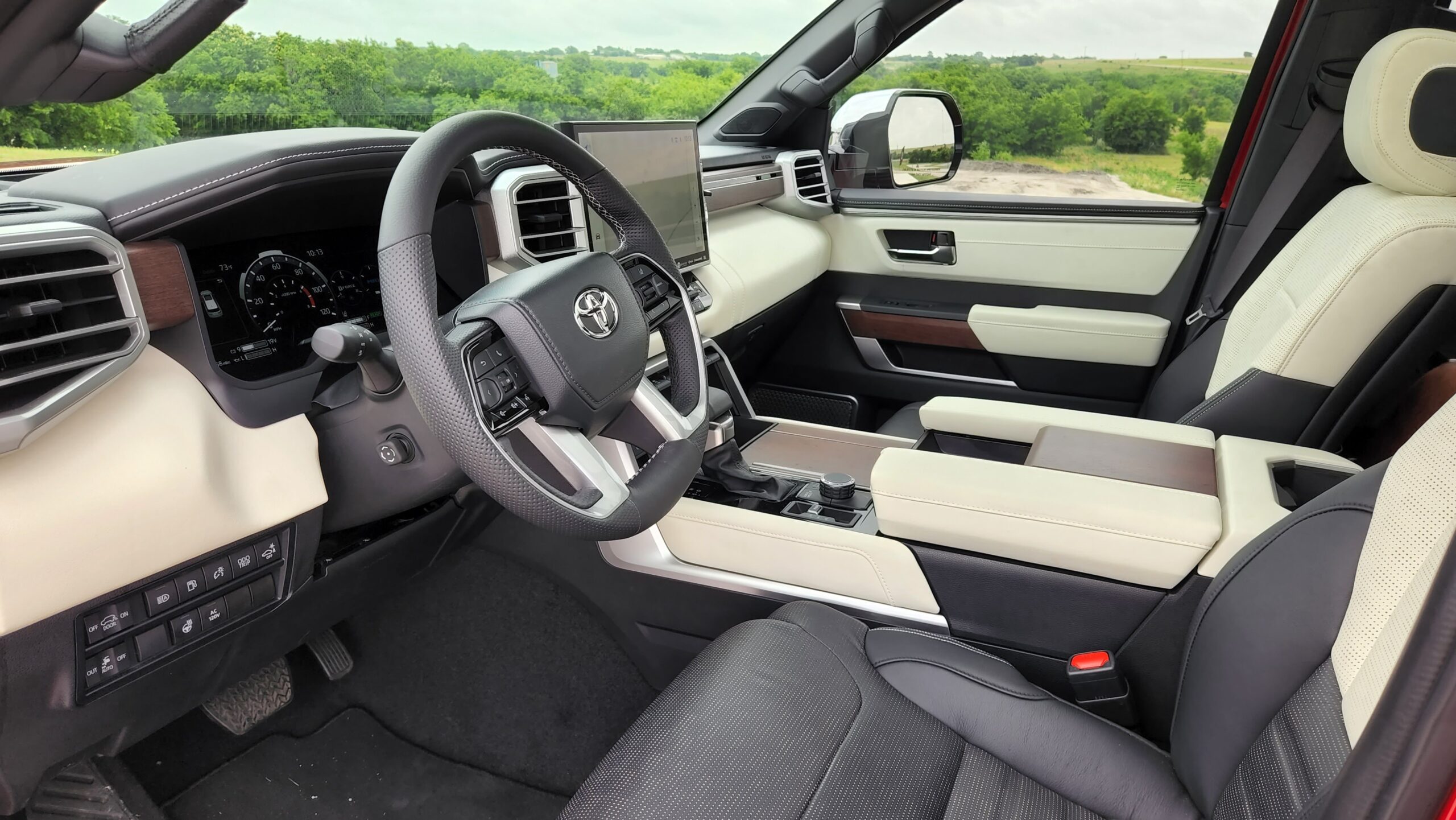
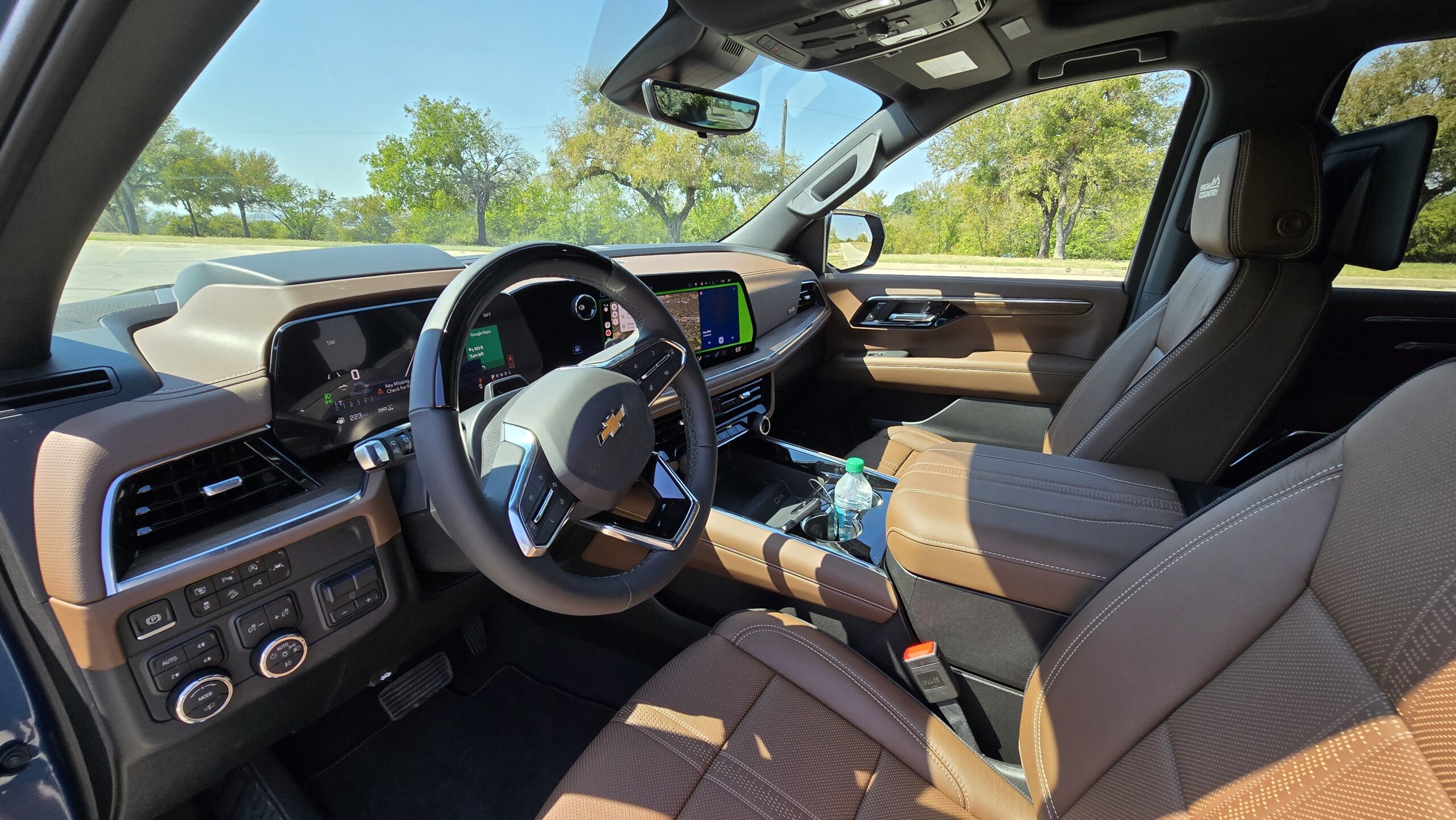
Interior Design
So, walking up the vehicles, both are obviously going to have smart entry systems with remote start, however, it’s only the Tahoe that has it on the fob free for life.
NOTE: Toyota Remote Connect subscription required for remote start after the trial period
On the flip side, it’s the Tahoe that does not have sensors behind the door handle to unlock, but both have power deploying running boards.
Now checking out the interiors themselves, they have radically different design themes. The Tahoe’s exclusive Mocha leather cabin has an upscale country design to it, while the Sequoia’s black and white leather cabin has more of an urban chic design.
As far as the seats themselves, they are both heated and ventilated with memory functions but otherwise they are quite different. The Sequoia has more adjustments since it includes power thy extension, it also has higher end semi-aniline leather, and new this year adds power massage abilities – something GM reserves for only Yukon and Escalade.
Now as far as the broader interior materials, both dress to impress and have appointments more common to luxury nameplates. Across both upper and middle dashboards, you’ll find leather coverings, real wood accents, and stitching patterns that break up the space. Overall, they seem pretty much equivalent and are incredibly nice.
Now after startup, you will find full digital gauge clusters on both. The Sequoia’s is 12.3 inches large compared to the Tahoe’s 11-inch setup, but the Tahoe allows for more useful information to be displayed such as a full map view.
Additionally, while both have head up displays, the Tahoe’s measures in 5-inches larger at a whopping 15 inches compared to 10.
Of course, it pretty much goes without saying that both have heated, leather wrapped steering wheels with power adjustment and rain sensing wipers.
Storage and Technology
Now the next major area to evaluate is interior storage, where both of them are very large. However, Tahoe seems to maximize the space best because its center console and front storage areas are both larger.
Additionally, it’s only the Tahoe that includes a sliding console for extra secret storage and security when the vehicle is turned off.
The reason for that is probably that the Tahoe has a column mounted out of the way, while Toyota kept a traditional one. Regardless of your preference, both display multi-view 360-degree camera systems when in reverse.
For climate, both have 3-zone automatic setups and have physical knobs to control important functions like temperature.
Both also have knobs to control their audio systems, so let’s sample them. Both are very bass heavy and leave a little to be desired for their prices, so no points will be awarded.
TAH: 10-speaker Bose Centerpointe Premium audio
SEQ: 14-speaker JBL Premium audio
Now moving on to the screens, these are big center points of the interiors. The Sequoia used to have a big advantage here with its 14-inch display, but now Chevy has the advantage. It is including a gigantic 17.7-inch display standard on all trim levels. That’s about 23% bigger, and while both of them have wireless Android Auto and CarPlay, it’s only the Chevy with Google built in. That allows for things like Google maps to be natively in the system.
Finally, ending the front areas, both have rear camera mirror systems and large power panoramic moonroofs.
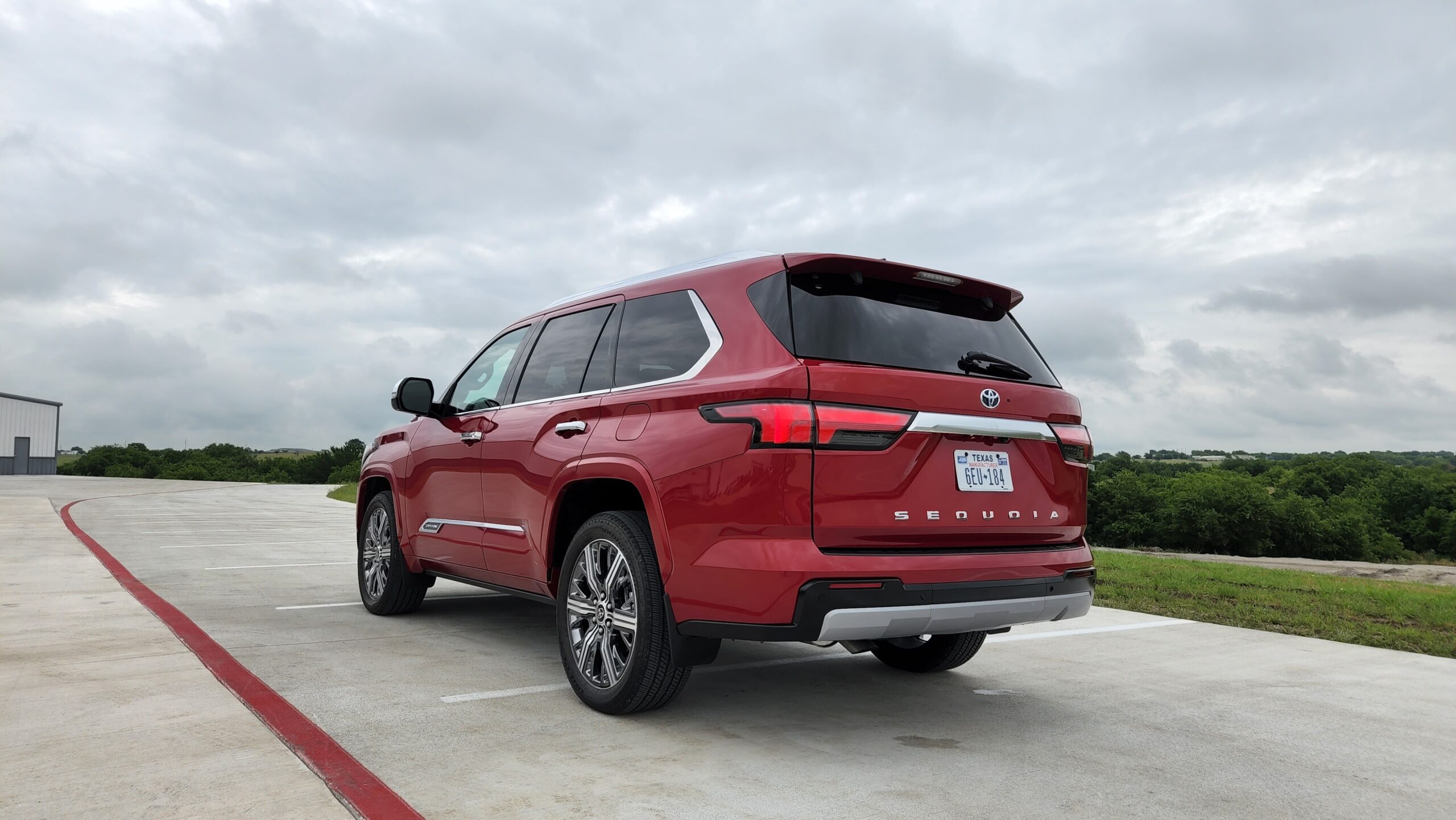
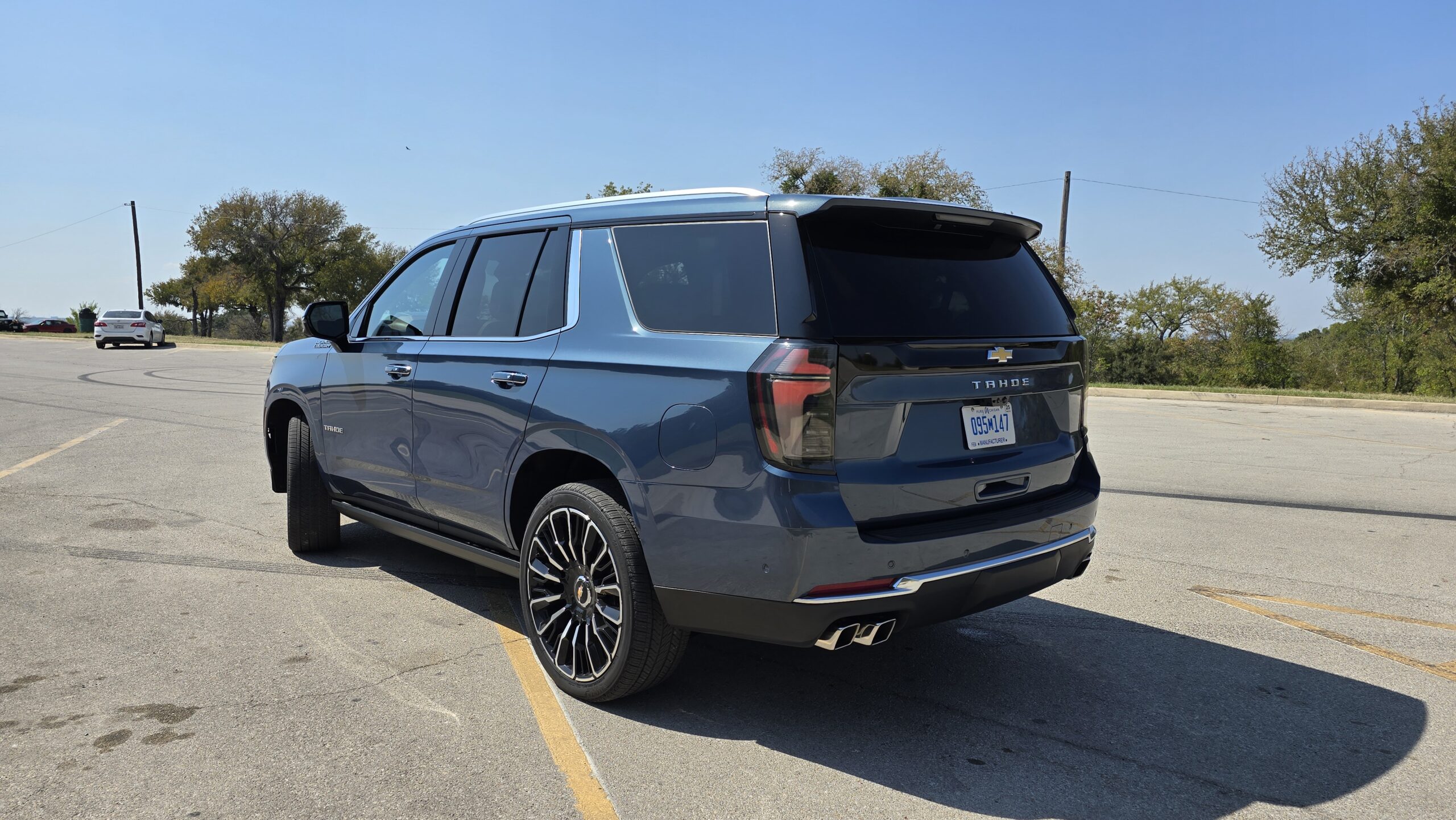
Rear Seats and Cargo
But since these are giant 3-row SUV’s, there is still a lot to talk about in the rear areas of the cabin. Here, the Tahoe continues to offer a legroom advantage and headroom is basically the same in either.
TAH: 42.0-inches of legroom | 38.9-inches of headroom
SEQ: 39.2-inches of legroom | 38.4-inches of headroom
The features are also largely the same, both having their own climate controls, heated rear seats, USB ports and household outlets. However, the Capstone Sequoia includes ventilated rear seats something only available on Yukon and Escalade.
The Sequoia also has rear window sunshades, but only the Tahoe’s seats can slide forward and back.
It’s also only the Tahoe that includes rear seat entertainment as equipped. That gives you these large dual screens for keeping the kids entertained.
Moving on to the next row of seats, we see more significant differences. Crucially, the Tahoe rides on an independent rear suspension, which is something the Sequoia does not. That means, even though the legroom number is competitive with the 3rd row seats slid all the way back, the reality is Sequoia feels a lot more cramped. The higher floor reduces thy support and headroom.
TAH: 34.9 inches of legroom | 38.2 inches of headroom
SEQ: Legroom: 28.1-33.7 inches | Headroom: 35.6-inches
The same situation plays out in the rear, after opening their hands-free power tailgates. The independent rear suspension and lack of battery packs allows the Tahoe to deliver significantly more space across all 3 seating configurations. The Sequoia has a cargo management system to try to make up for the raised floor and the way the seats fold, but the Tahoe is the way to go for max space.
TAH: Behind 3rd row: 25.5 cubic feet | Behind 2nd row: 72.6 cubic feet | Max: 122.7 cubic feet
SEQ: Behind the 3rd row: 22.3 cu.ft | 2nd row: 49.0 cu.ft | Max: 86.9 cu.ft
Features-wise, the rear glass pops independent from the tailgate itself in both, they have power folding third rows, and full-size spare tires, but only the Tahoe has buttons to fold the second row from the cargo area.
But it’s still a very tight race, so now let’s take them out on the road!
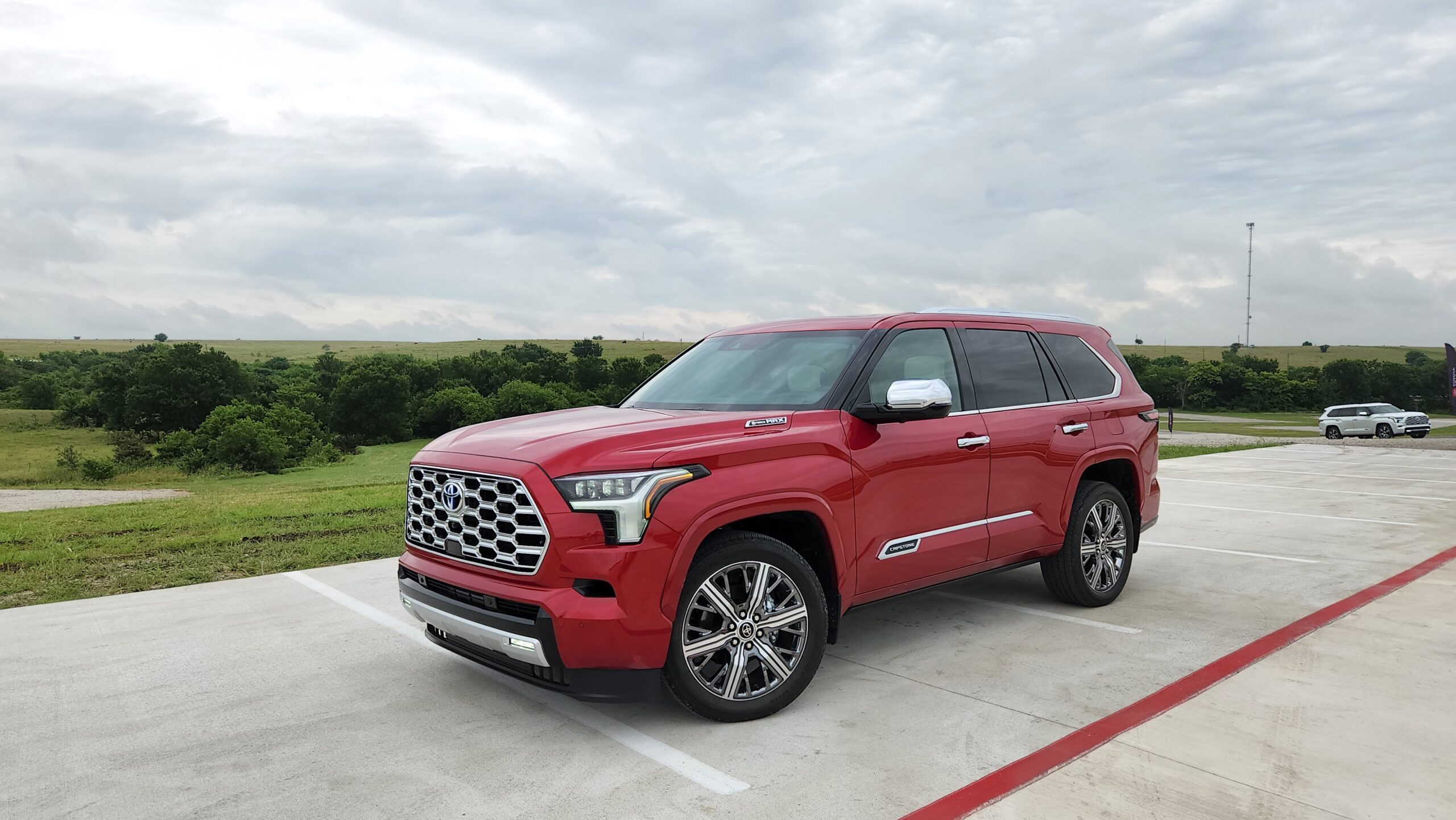
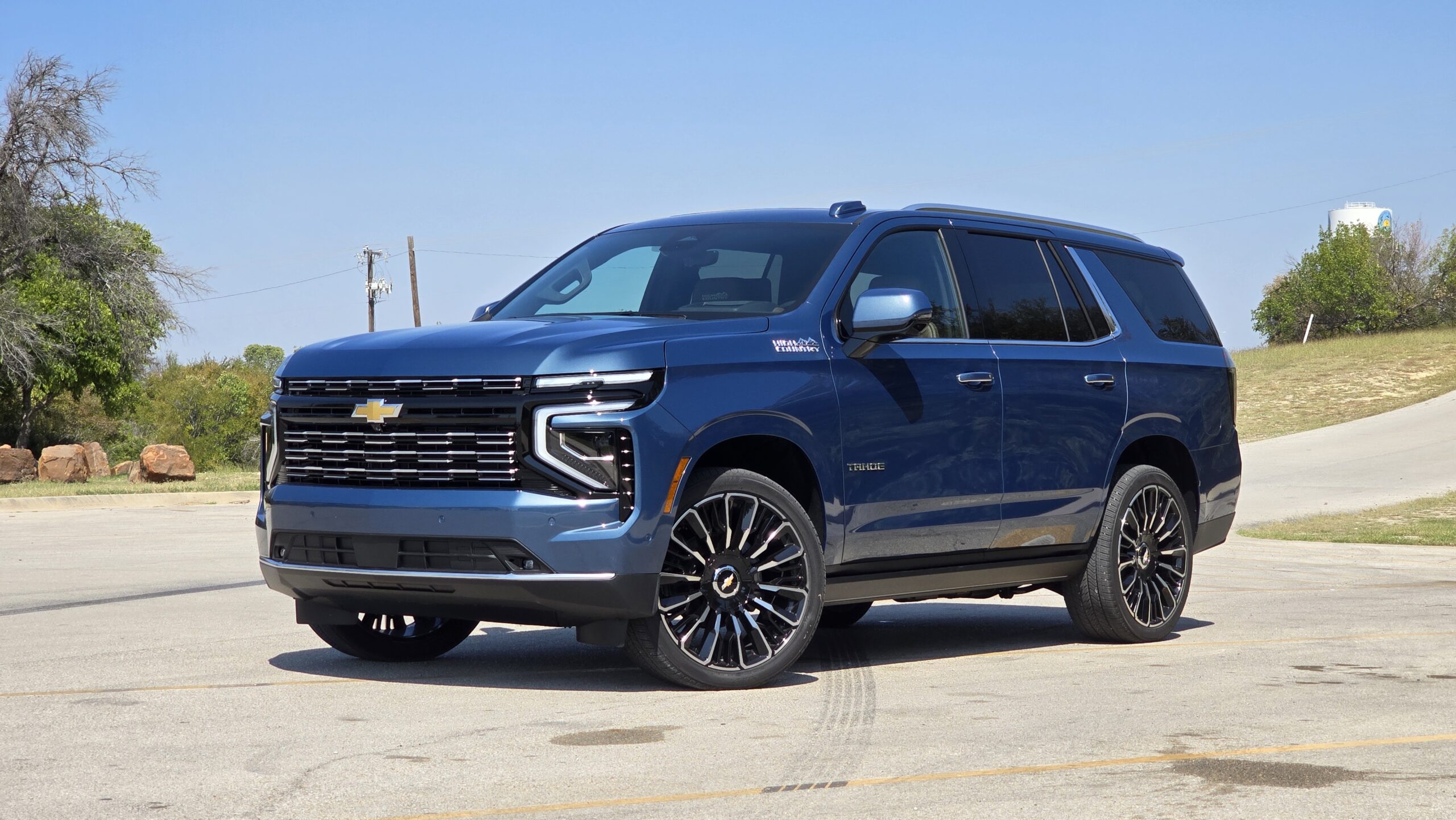
Powertrains
Now these two have been very different throughout this video, so it shouldn’t be surprising that it applies even more so out on the road. For engines, the Tahoe stays with the tried and true 6.2L naturally aspirated V-8, making 420 hp and 460 lb.ft of torque. The Toyota, on the other hand, goes with a twin-turbo V-6 hybrid system. It delivers stellar numbers that exceed the Tahoe, 437 hp and a whopping 583 lb.ft of torque.
As far as the transmissions are concerned, both have 10 speed automatic transmissions that are nice and responsive, and power is put to the ground via 4-wheel drive systems as equipped.
Test Drive and Fuel Economy
But perhaps as important as power, is ride quality. The Tahoe has a three-fold advantage here that begins with that independent rear suspension we already mentioned. It also has magnetic ride control, aka adaptive dampers, and a full air suspension. Surprisingly, even with those massive 24-inch wheels, the Tahoe’s ride is still smoother and more controlled than the truck-like feel of the Sequoia. It uses a solid rear axle, adaptive dampers and just an available rear air suspension.
Here at Car Confections, we take a sound level reading for all the vehicles we test on the channel so that we can compare them, and when tested on our local Kentucky roads, both are nearly identical. One dB of noise difference is considered discernible by the average adult, so that’s not enough to score a point.
TAH: 57.2 dB @ 55 MPH
SEQ: 58.7 dB @ 55 MPH
Finally, when it comes to fuel economy, the Hybrid Sequoia takes the lead. It comes in 4 MPG combined better than the V8 Tahoe which will make a significant difference over the lifetime of owning these two. One wild card is that the Tahoe offers a diesel option.
TAH 4WD: 14/18/16 MPG
SEQ 4WD: 19/22/20 MPG
Resale and Reliability
In our reviews and comparisons, we are also adding in reliability and resale information to give you a better picture of the overall value beyond just the original MSRP.
Beginning with reliability, we developed the Combined Reliability Index, which considers several studies from trustworthy sources, and combines them in a way that gives a more realistic picture. In this respect, these two excel: Toyota takes the number one spot for all vehicle brands 16 spots above industry average, while Chevy takes the number 2 spot and is the 15 slots above average.
We also put Mason’s economics degree to work to develop a detailed Predicted Resale Value tool. After 5 years and 60,000 miles, both do pretty well. The Toyota comes in at a predicted resale percent of 64.50% and the Chevy 54.7%.
Resale is obviously important because it determines how much money you get back, but we can’t forget about the price difference at the original purchase. There is a $7,625 difference between the two of them.
I want to emphasize that if money, reliability or resale value matter less to you personally, feel free to disregard these points. And if you’d like to check out all our data about reliability and resale values, as well as learn about our methodology, make sure to head to www.carconfections.com/resale and www.carconfections.com/reliability. Buying a car is a big decision, and this is a great place to compare all the makes you might be cross-shopping.
2025 Toyota Sequoia vs. 2025 Chevy Tahoe Winner!
So that’s it for another exciting comparison, between the king-pen Tahoe and the very competitive hybrid Sequoia! Let’s quickly recap here and discuss who should be “your” personal winner.
Sequoia:
- Tows more
- Massaging seats
- Hybrid powertrain (better MPG, more torque)
- Rear seat features (vented seats, sunshades)
Tahoe:
- Significantly bigger cargo capacity and third row
- Drive experience (V8 engine, air suspension w/magnetic ride)
- Technology advantages (Google built in, Supercruise)
Now we want to know your opinions, so make sure to head to the comment section and let us know which one you would pick!
Thanks for joining us for another Car Confections Comparison! We’ll catch you next time as we sample the latest automotive delicacies!
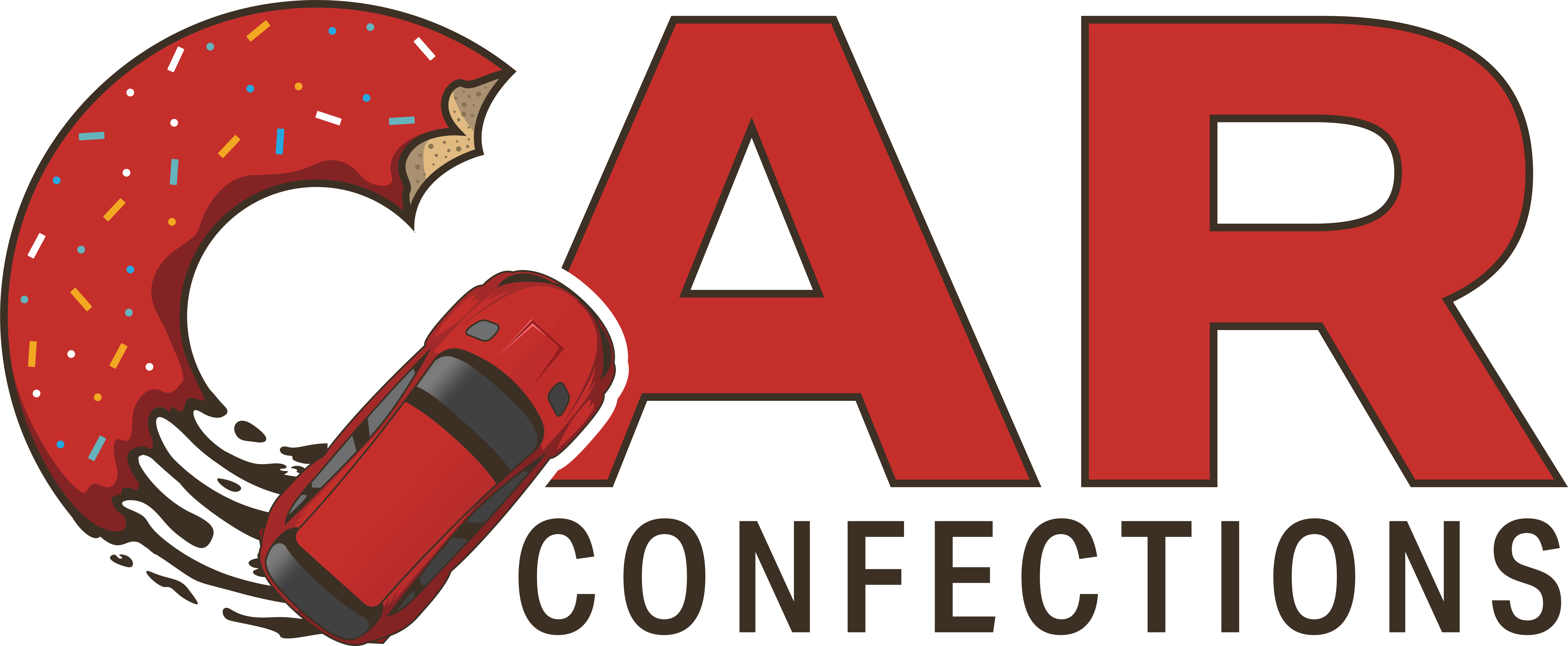
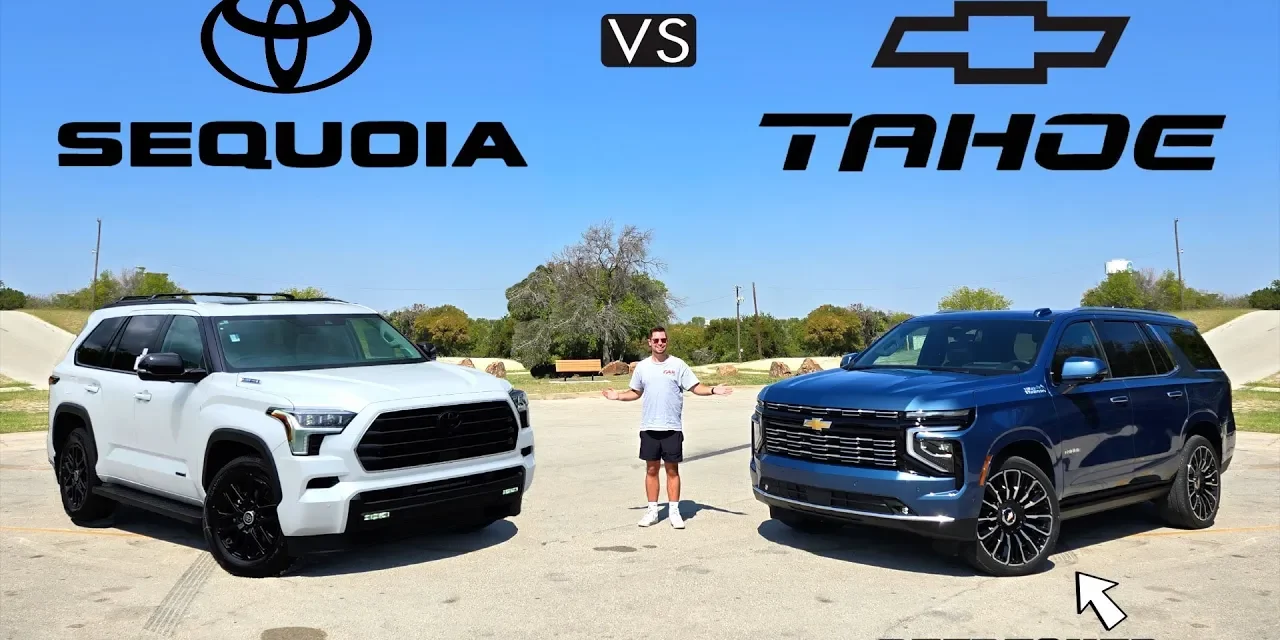
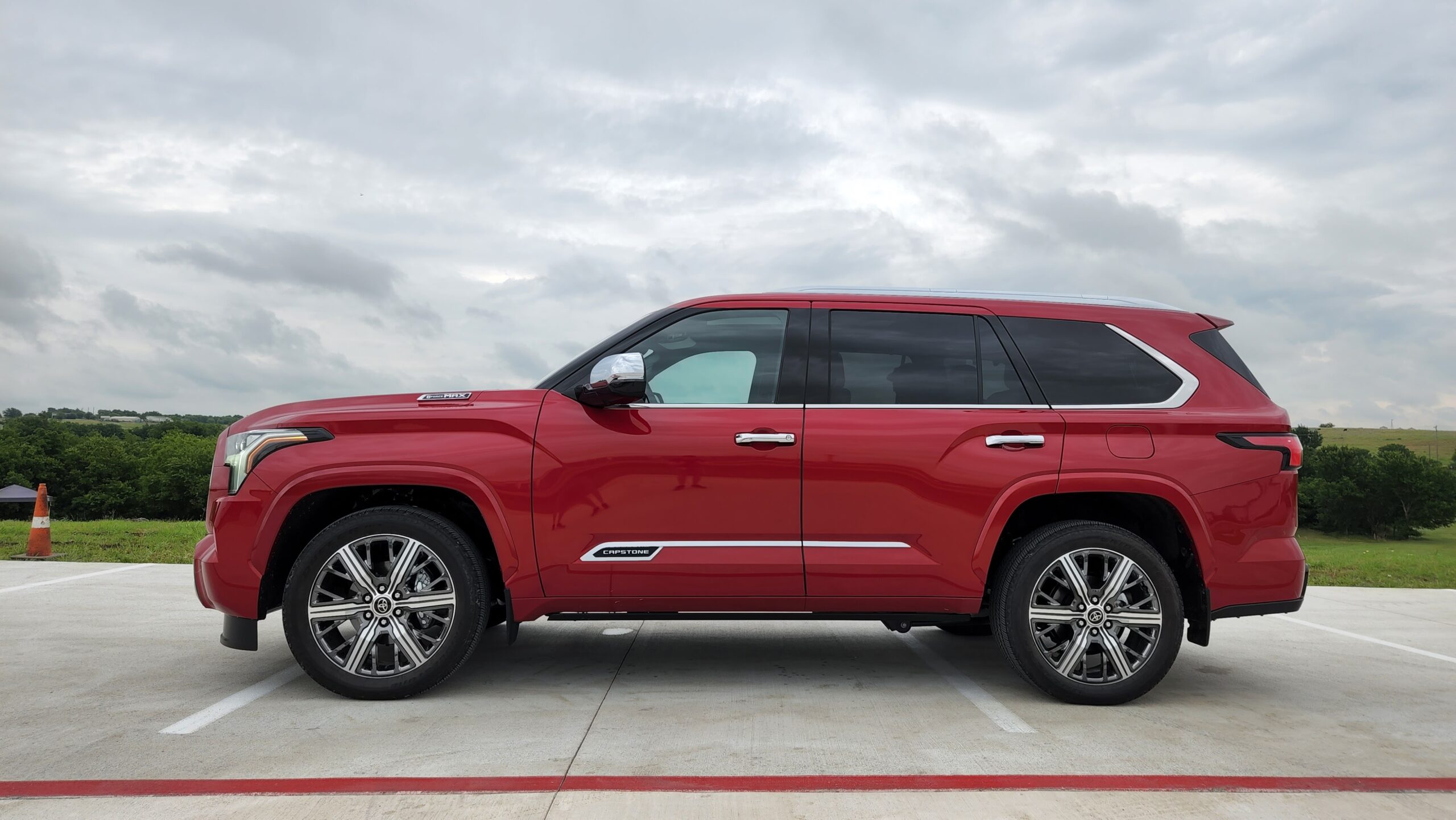
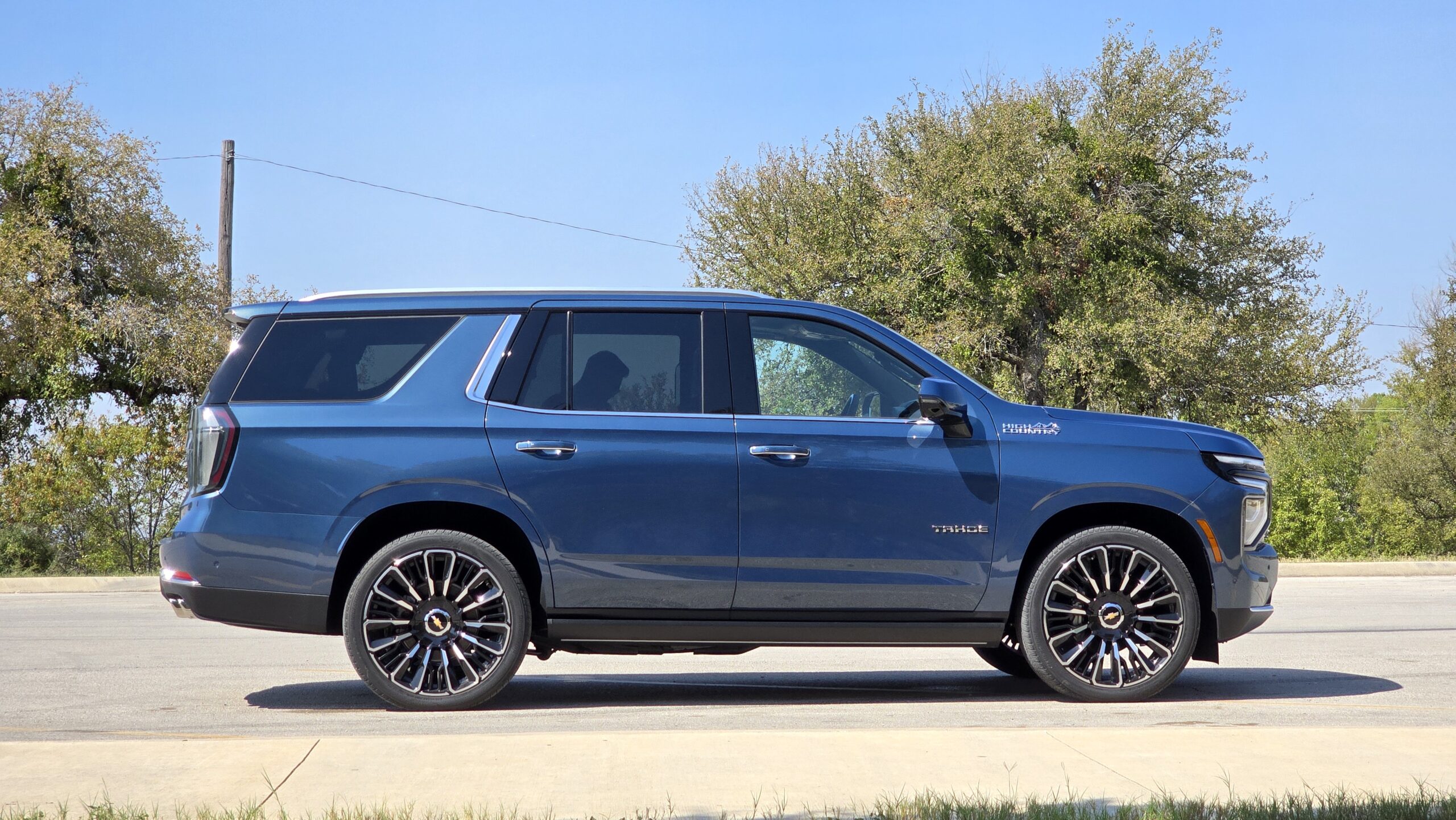
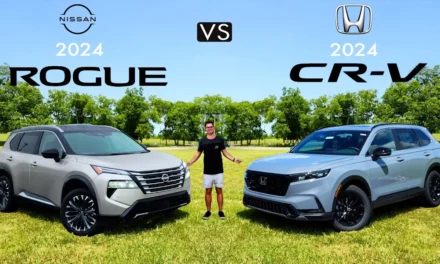
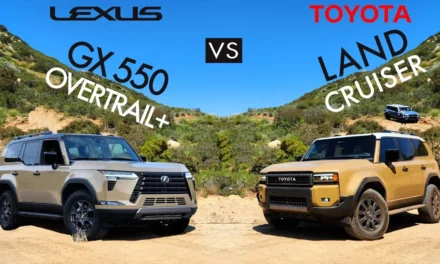

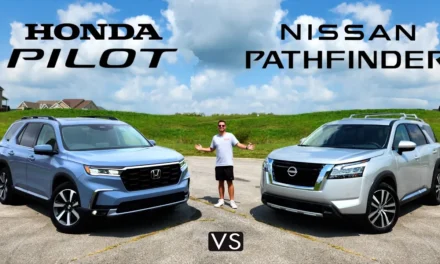
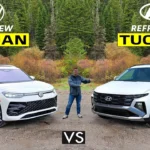





Recent Comments